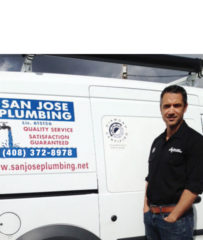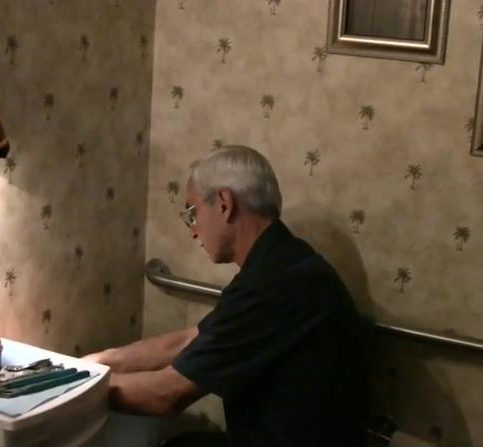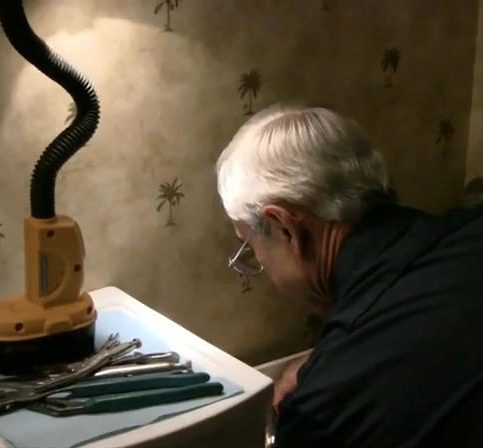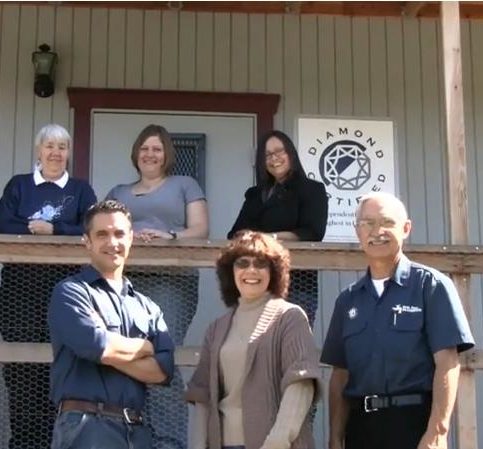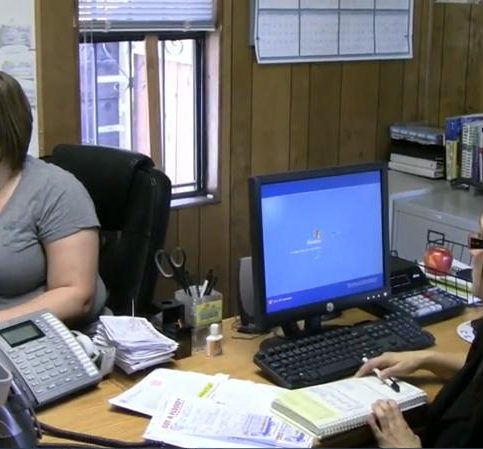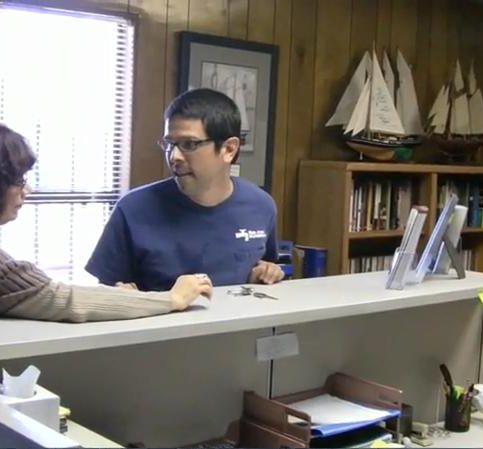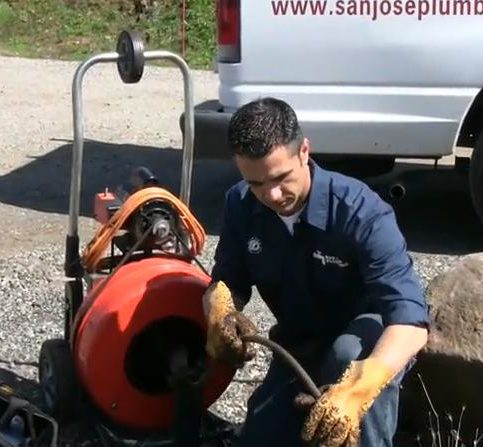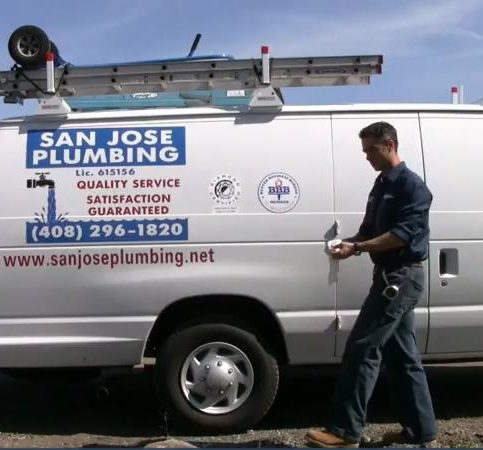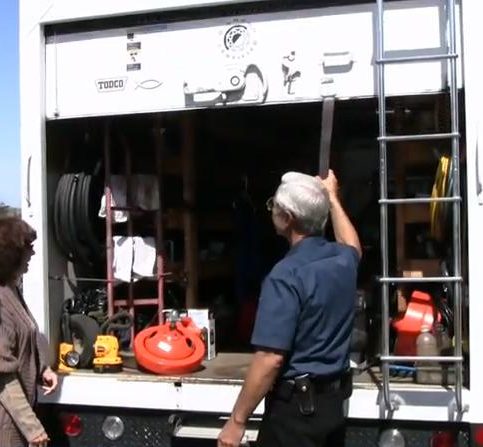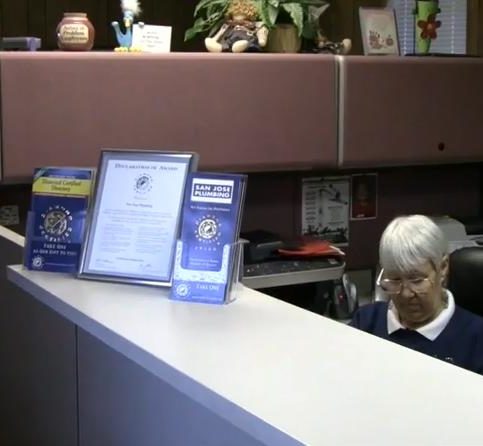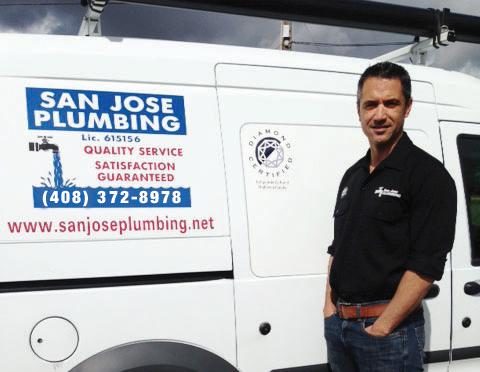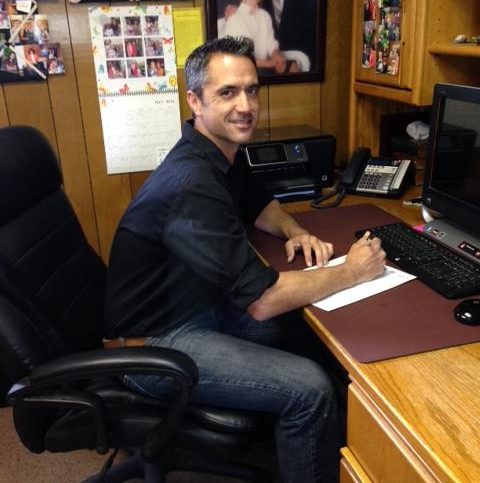Complete Video Transcription
SAN JOSE — Host, Sarah Rutan: One of the simplest measures you can take to avoid a costly water bill is to routinely check your plumbing fixtures for leaks. Today we’re in San Jose with Diamond Certified Expert Contributor Adam Garza of San Jose Plumbing to learn more.
Diamond Certified Expert Contributor, Adam Garza: Okay, today, just want to give you a few tips on how I can save you money with your water bill, and then also help you prevent any water damage to your home or place of business. So, for example we have the main kitchen faucet here, and we also have the Instahot and Reverse Osmosis system. A lot of times if we these fixtures are leaking from the spout it is very important to adjust those leaks sooner than later. A lot of times the cartridges inside are leaking and causing the issue. If you let them go for too long, those cartridges are very difficult to take out. Due to corrosion, the length of time it’s been leaking. So the sooner you address it the better off you’ll be.
Um, we have the Reverse Osmosis system, which a lot of homes and businesses have as well. A lot of times it can been leaking from the spout, even at the base. A lot of times when it’s leaking at the base it can rain down underneath into the cabinet as well, causing water damage underneath – which you definitely want to avoid. And same thing with the Instahot. It can leak behind the handle, rain down back behind here and leak down into the cabinet as well.
And then underneath we have a lot going on here. We have a lot of things that should be checked every three to six months. Um, leaks generally start very slowly and very gradually. So the sooner that you address these leaks the better off you’ll be, the less water damage to your cabinet and to the flooring. So what I like to do is get a light so you can see everything pretty clearly, and use your hand, and also feel around. Lot of times a light doesn’t catch all of the moisture that’s building. So yes, you want to feel every single joint, just feeling around, seeing if you feel any moisture. And of course visually see if you have any puddles developing underneath any of these areas. You have your reverse osmosis tank; you just always feel the connections. Just feeling everything, and just being sure everything is okay. You have your garbage disposal. You want to look at the very top, as well as the bottom. Just feeling around, again making sure that you don’t feel any moisture or any wetness. And that’s pretty much it here, so what we can do is head over to the bathroom next.
Okay, now we’re looking at toilet, and I just want to give you a few ideas of what to look at. Again to help prevent any water damage in the future. So, what we have here on the toilet inside is your fill valve, and off the fill valve is this water line. And it’s very important that this is secure. If it’s not secure a lot of times when the toilet is flushed, water can spread everywhere, behind the tank, run down and cause water damage to the sub-floor, to your flooring, your baseboard, and the sheetrock. So it’s very important to make sure this is secure. Also, it can possibly leak between the tank and the bowl.
So it’s very important to feel the tank bolts, make sure everything is nice and dry. Again, these leaks start very slowly and gradually so it’s very important to address these issues and find them early. Another thing too when the toilet is flushed, it can leak at the very base of the toilet where the wax ring is. It can leak on the side, the front, and the back. And then lastly you can use your hand, just kind of feel around at shut-off valve and the water line. Make sure everything feels nice and dry, and that way you can find leaks ahead of time before they become really bad, and cause any water damage. And now we’re going to go look at the shower.
Okay, now we’re looking at the shower valve. And it’s very important to look at the shower valve because it can be leaking from a few different areas. The first area is behind the handle. It’s very important to see if this is leaking, if it is it could make this very difficult to change in the future, and this leak could run inside the wall and cause water damage that you may not even be able to see. It can also cause this to leak as well, the main cartridge that is in there. And so, if this is constantly dripping it can cause damage to your grout, your tile. So it’s very important to address these issues as soon as possible. Also, I’ve seen where in the past when this leaks it gets sprayed back, can cause water damage to your sheetrock and your tile as well. So it’s very important to address these issues as soon as possible to prevent water damage to your home.
Okay, next we’re looking at the water main shutoff valve. It’s very important to know exactly where your water main shutoff valve is located in case there is an emergency with your water heater inside the house, or a fixture that’s leaking, or a leak inside a wall. It’s very important that you know exactly where it’s at so you can get to it quickly. And so how this particular shutoff works, it is a gate-valve, so it does turn clockwise, and that’s how you would turn it off. And it is very important that about every three to six months, or so, that you do turn this whether you need to or not. Just to make sure that it’s running nice and freely, just like this. If they’re not touched over a couple years they can freeze up, and then you can’t move it at all and it just sticks. So you don’t want that. So it’s very important to make sure this is always working properly.
Then we also have the hose bib, and usually a home will two to four, maybe even up to five-six hose bibs around the property. So you definitely want to check these as well to make sure they are not leaking underneath the handle, or just running through the hose and just wasting water. These are very easy to change out and replace. So you definitely want to address those issues as quickly as possible to save you money and make sure that you don’t cause any water damage to your foundation if water is leaking out of the hose and constantly running. So, always know where your water main shutoff valve is, and you’ll be in good shape.
Host, Sarah Rutan: To learn more from local top rated companies, visit our Diamond Certified Expert Reports at experts.diamondcertified.info.
Read moreRead less







